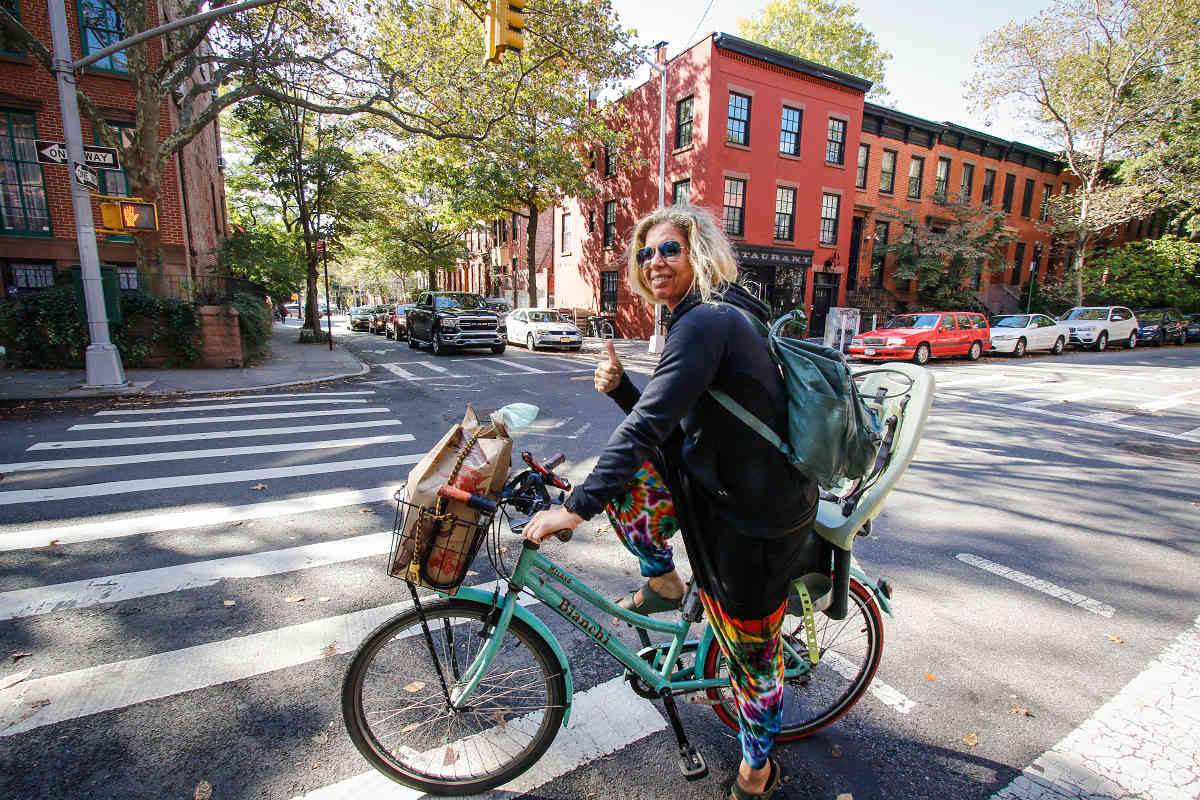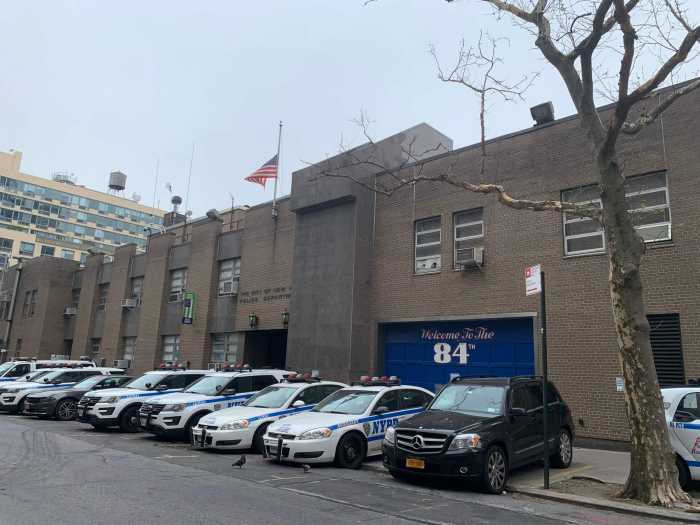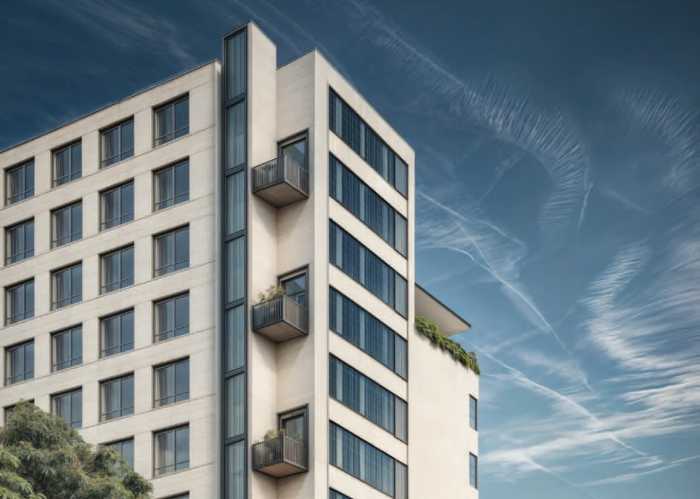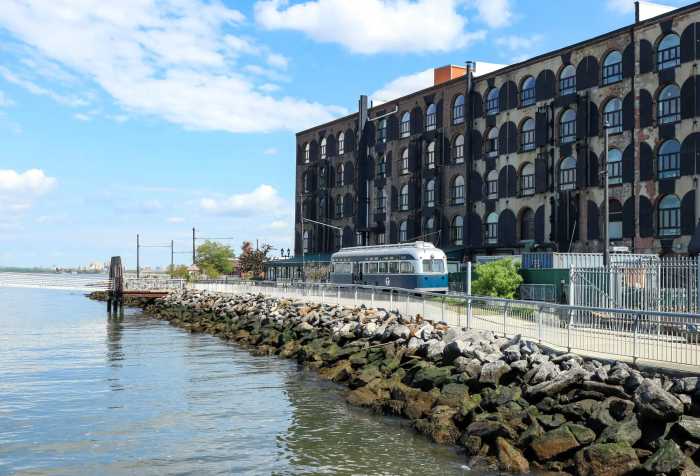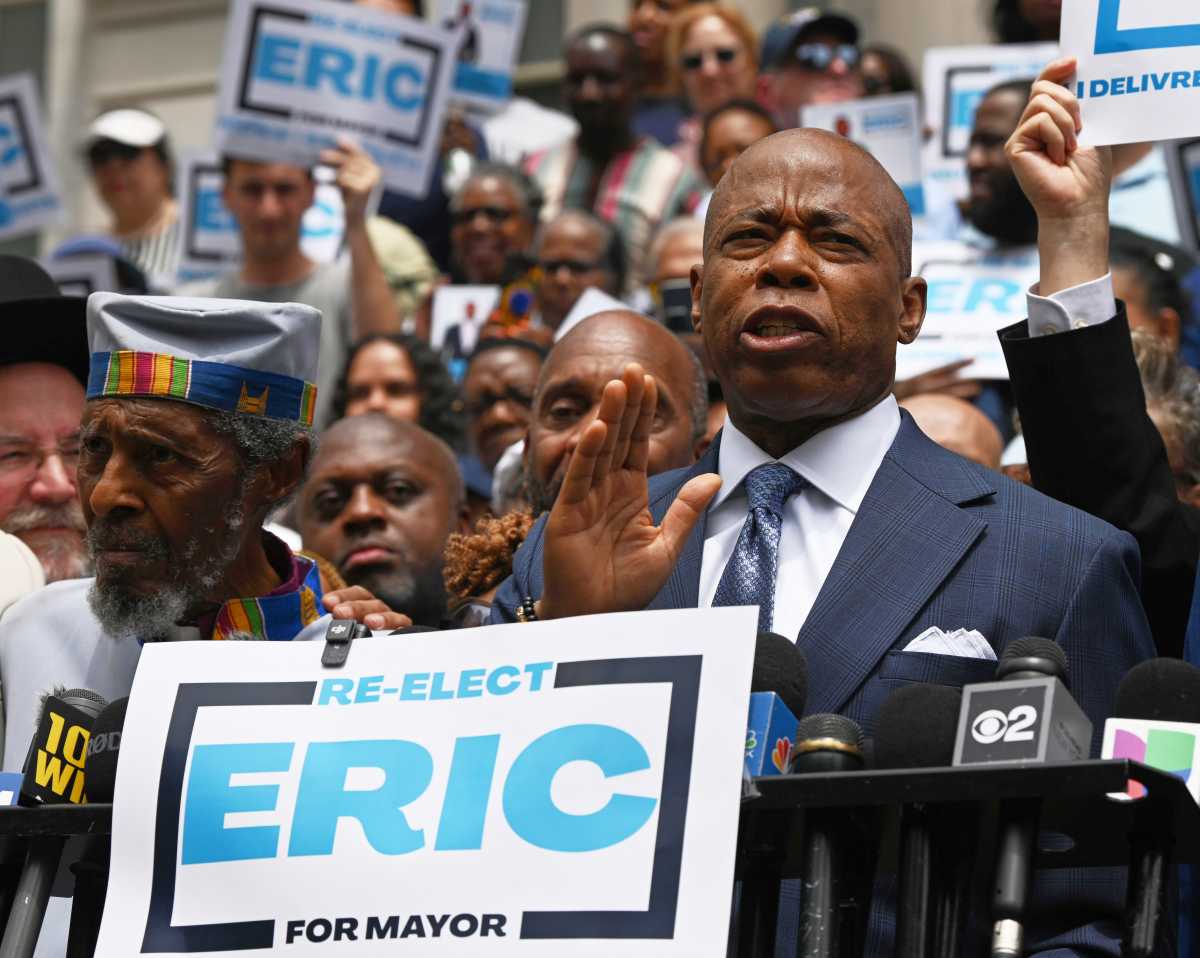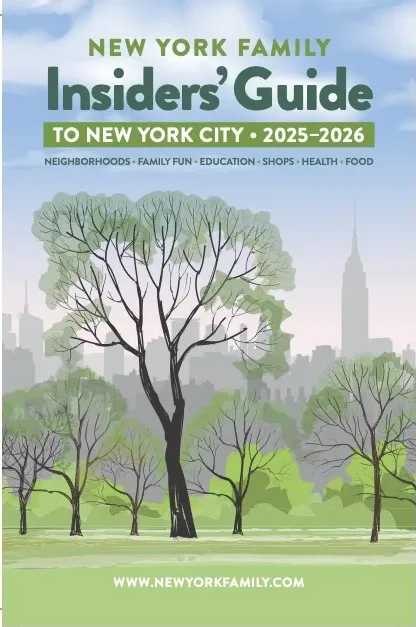They’re taking the green light away from motorists — and giving it to the cyclists!
City transportation honchos quietly enhanced the flow of bicycle traffic at the expense of motorists in Brownstone Brooklyn nearly a year ago, the city’s top transit official announced Wednesday.
“In a year when two thirds of cycling fatalities have unfortunately been here in Brooklyn, we are excited to embark on innovative new safety projects,” said Department of Transportation Commissioner Polly Trottenberg.
The cloak-and-dagger bike-safety scheme — which the department rolled out in December — saw for longer delays between green lights at successive intersections along two one-way streets in Boerum Hill, allowing traffic flow to better synchronize with the slower speeds of cyclists compared to drivers.
Traffic lights along the eight-block stretches of Hoyt and Bond streets — between Schermerhorn and Baltic streets — has been secretly turning green 11 to 12 seconds after the previous light in an effort to match the average pace of bikers, who regularly travel around 15 miles-per-hour, according to the agency.
Before that, the lights turned green seven seconds after one-another to cater to the roadway’s 25 miles-per-hours speed limit.
Vehicle speeds have slightly slowed on Hoyt Street, while remaining the same on Bond Street — and there was no sign of increased traffic along neighboring roadways, according to the department.
Meanwhile, the adjustments saw less bikers running red lights along the stretch, according to the agency.
One Clinton Hill cyclist said she liked the agency’s move and that the lights on the streets align well with her speed.
“They run pretty well,” said Shoshana Simpson. “If it’s going to be better for cyclists, I’m in favor of it — it’s my main mode of transportation.”
Transit bigwigs chose the two streets because they feature some of the borough’s busiest bike lanes, with more than 500 pedalers-per-hour during rush hours — which usually outnumbers cars, according to the agency.
The push to improve street safety comes at the tail-end of a particularly deadly year for cyclists in Kings County — where 17 bikers have been killed in traffic accidents, compared with just nine in the other four boroughs.
Most recently, an unlicensed driver ran down 10-year-old Dalerjon Shahobiddinov while he was pedaling in a Kensington crosswalk on Oct. 5, according to police.=
Since the pilot program began 10 months ago, vehicle speeds have slightly slowed on Hoyt Street, while remaining the same on Bond Street — and there was no sign of increased traffic along neighboring roadways, according to the department.
Meanwhile, the adjustments saw less bikers run red lights along the stretch, according to the agency.
Transportation officials plan to replicate the project next year on Clinton Street between Brooklyn Heights and Carroll Gardens, along with 43rd Avenue in Queens, and Prince Street in Manhattan.
Mayor Bill de Blasio is touting the new transit scheme as part of his “Green Wave” bike initiative — a sweeping $58.4 million plan to build 80 miles of additional protected bike lanes by the end of 2021 — even though the secret light adjustments predated his July “Green Wave” announcement by roughly eight months.
Street design gurus also unveiled two new miles of protected bike lanes on Fountain Avenue — between Pitkin and Seaview avenues — in East New York, marking 100 miles of protected lanes the city built under the de Blasio administration.
The agency plans to finish three more protected bike lanes in Brooklyn by the end of the year — including Fourth Avenue between 15th and 60th streets, Shore Parkway between Bay Parkway and Bay 53rd Street, and Seventh Avenue between 65th and 84th streets.


